


|
1422 |
Henry VI succeeds his father at the age of nine months! His guardian is the Duke of Bedford, killed in battle in 1435. Henry assumes power two years later, aged sixteen. |
|
1423 |
The Florence sculptor Lorenzo Ghiberti starts work on the Gates of Paradise, the bronze doors he designed for the Baptistry of Florence Cathedral. The work is completed in 1452. |
|
1429
1431 |
After a trial lasting four months, the visionary Joan of Arc, aged 19, is burnt at the stake as a heretic. The young English king, Henry VI, is crowned King of France at Notre Dame Cathedral in Paris.
|
|
1432 |
The Flemish painter Jan van Eyck, one of the first oil painters, completes his masterpiece, the Adoration of the Lamb, a panel in the altarpiece in the church of St. Bavo, Ghent.
The magnificent tomb of the Mongol leader
Tamerlane, known as the Gur-
|
|
|
|
|
1434
1435 |
Donatello, the brilliant Italian sculptor and painter,
working in Florence, completes his life-
|
|
1436 |
In Florence, birthplace of the Renaissance and home to the Medici family, the cathedral's magnificent dome, designed by the city’s architect, Filippo Brunelleschi, is finally completed.
|
|
1437 |
The Portuguese Prince, known as Henry the Navigator, fails to capture Tangiers in Morocco, but continues his exploration southwards along the west coast of Africa.
The astronomer and mathematician Ulugh Beg, ruler of Samarkand, produces the Zij of Ulugh Beg, a set of astronomical tables which includes a catalogue of some 1,000 stars.
|
|
1440 |
Oba Ewuare becomes ruler of the Kingdom of Benin, West Africa. He rebuilds his capital (known today as Benin City) and begins to expand his territory westward towards Lagos.
|
|
1448 |
The German
|
|
1449 |
A huge Chinese army is ambushed and defeated
by Mongol forces north- |
|
1450 |
An English landowner, Jack Cade, heads a Kentish rebellion against corruption and high taxation. He defeats the king's army at Sevenoaks, but is later hunted down and killed.
The once-
Minchancaman, the last ruler of the Chimu Empire extends his lands southwards to take in Lima (Peru), and comes into conflict with the Incas under their famous leader Pachacuti.
|
|
1452 |
The Italian artist Piero della Francesca begins work on his Arezzo frescoes. Completed in 1466, this cycle is now recognised as one of the art treasures of the early Renaissance.
|
|
1453 |
The Hundred Years’ War, that long conflict of battles and sieges, ends with a French victory at Bordeaux. England loses all its possessions in France except the port of Calais.
Constantinople falls to the Ottoman Turks and brings to an end the Byzantine Empire. Emperor Constantine is killed and the basilica of St. Sophia is turned into a mosque.
|
|
1455 |
The Wars
of the Roses,
|
|
1456 |
The French lyric poet François Villon writes his first major work Le Petit Testament. This and his Le Grand Testament, five years later, are in the form of imaginary last wills.
|
|
1460 |
The ancient Mayan Empire, which regained some of its former power in the twelfth century, finally breaks up. The major city of Mayapan and other important centres are abandoned.
The Lancastrians lose the Battle of Northampton, but in December Richard of York is defeated and killed at the Battle of Wakefield. His son Edward takes over the Yorkist cause.
|
|
1461 |
Edward of York is proclaimed king as Edward IV after defeating the Lancastrians at the Battle of Towton. Henry VI, together with his wife and son, flee to Scotland.
|



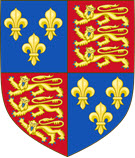


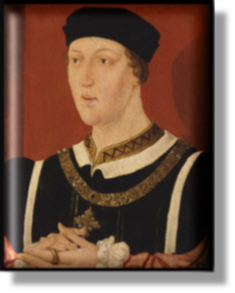 xxxxx
xxxxx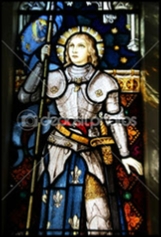 home
the minority council was rendered virtually useless by constant
disputes between its members. In 1435 matters grew worse. The Duke
of Bedford was killed in battle, and the Burgundians, up until then
staunch allies of the English, changed their allegiance, and put all
their support behind the French king, Charles VII.
home
the minority council was rendered virtually useless by constant
disputes between its members. In 1435 matters grew worse. The Duke
of Bedford was killed in battle, and the Burgundians, up until then
staunch allies of the English, changed their allegiance, and put all
their support behind the French king, Charles VII. 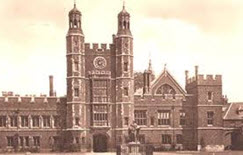
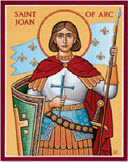 Joan
of Arc
Joan
of Arc Under
their leader
Under
their leader 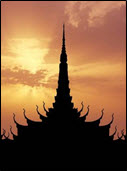 Following
the capture of Angkor Thom by the Thais, the capital is
abandoned for
Following
the capture of Angkor Thom by the Thais, the capital is
abandoned for  printer
printer
 a
a
 struggle
for the English throne, breaks out between the Houses of York
and Lancaster. The Lancastrians are defeated at the Battle of
St. Albans.
struggle
for the English throne, breaks out between the Houses of York
and Lancaster. The Lancastrians are defeated at the Battle of
St. Albans.